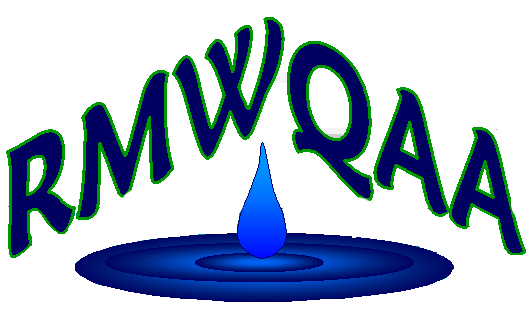If you work in the water or wastewater field you have probably heard a lot lately about per- and polyfluoroalkyl substances (PFAS). So what is PFAS? It is a group of man-made chemicals that have been manufactured and used throughout the world, including the US since the 1940s, and are found in many consumer products such as microwave popcorn bags, pizza boxes, fast food wrappers, shampoo, dental floss, stain repellents, and non-stick cookware. PFAS manufacturing and processing facilities, airports, and military installations that use firefighting foams are some of the main sources of PFAS. PFAS may be released into the air, soil, and water, including sources of drinking water. Scientists call them “forever chemicals'' because their chemistry keeps them from breaking down under typical environmental conditions.
The two main PFAS chemicals that we hear a lot about are: perfluorooctanoic acid (PFOA) which is used in the process of making Teflon and perfluorooctanesulfonic acid (PFOS) which was the key ingredient in Scotchgard, a fabric protector made by 3M, and numerous stain repellents. I can remember having my carpets professionally cleaned and being offered (at an additional charge of course) the application of Scotchgard. This would make my carpet repel and block stains and with three kids why wouldn’t I want it!? It sounded like a miracle product.
So, why are PFAS important? There is evidence that exposure to PFAS can lead to adverse health outcomes in humans. The most consistent findings include higher cholesterol rates. Some studies have also noted low infant birth weights, effects on the immune system, cancer (PFOA), and thyroid hormone disruption (PFOS). In May 2016, the Environmental Protection Agency (EPA) released a revised lifetime health advisory of 70 ng/L for individual, or combined, PFOA and PFOS concentrations. This is a health advisory, not a standard. Certain PFAS can accumulate and stay in the human body for long periods of time.
What does this mean for drinking water and wastewater facilities? Currently, PFAS chemicals aren’t regulated in Colorado and the EPA hasn’t established drinking water regulations yet. However, many drinking water facilities participated in the 2020 Colorado Department of Public Health and the Environment’s free testing program that was offered to public drinking water systems serving communities, schools, and workplaces and also to fire districts with wells. This project tested for PFAS throughout the state in treated drinking water from public water systems, groundwater and surface water sources used for drinking water, and wells serving fire districts. The results can be found here.
On March 11, 2021, the EPA published the proposed fifth Unregulated Contaminant Monitoring Rule (UCMR 5). UCMR 5, as proposed, would require drinking water facilities to sample for 30 chemical contaminants between 2023 and 2025. These chemicals include 29 PFAS and lithium. EPA is currently accepting public comment on the proposed UCMR 5. Labs will be able to use either of two EPA validated analytical methods for potable (drinking) waters (Methods 533 and 537.1).
As for wastewater, the Water Quality Control Commission’s Policy 20-1 was approved in July 2020. The policy provides guidance on how to implement permit conditions for per- and polyfluoroalkyl substances under the existing narrative standard. The policy also sets values for a subset of PFAS, called translation levels. These translation levels may be used to implement permit effluent limits for PFAS in Colorado Discharge Permit System permits and to develop Colorado’s impaired waters list. However, there are currently no analytical methods for analyzing PFAS in wastewaters (non-potable) that are approved for Clean Water Act monitoring per 40 Code of Federal Regulations (CFR) Part 136 (Appendix B). Despite the fact that there are no analytical methods, monitoring for these parameters made it into the first Colorado permit on March 31, 2021.
So what can we expect in the future? On November 22, 2020, the EPA released a memo that describes recommendations for an interim Federal NPDES permitting strategy for PFAS. The memo was developed by an internal workgroup, in which all EPA regions were represented. The memo presented three primary recommendations:
- The inclusion of PFAS in the National Pollutant Discharge Elimination System (NPDES) permit monitoring requirements, using a phased-in approach to account for ongoing EPA analytical method development.
- Stormwater monitoring and pollutant control for municipal and industrial stormwater permits, addressing PFAS using traditional controls such as control measures, monitoring, stormwater pollution prevention plans (SWPPPs)
- Information sharing, using established platforms, such as a PFAS-permitting compendium on the EPA’s NPDES Municipal Sources Resources website, and information sharing on the EPA’s NPDES Permit Writers’ Clearinghouse.
 Structure of PFOA
Structure of PFOA
Lesa Julian has worked for the City and County of Broomfield for 30 years. She is currently the Environmental Services Superintendent.
 Welcome to the
RMWQAA Website!
Welcome to the
RMWQAA Website!  Welcome to the
RMWQAA Website!
Welcome to the
RMWQAA Website!